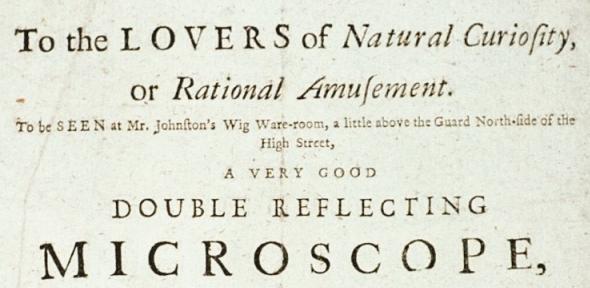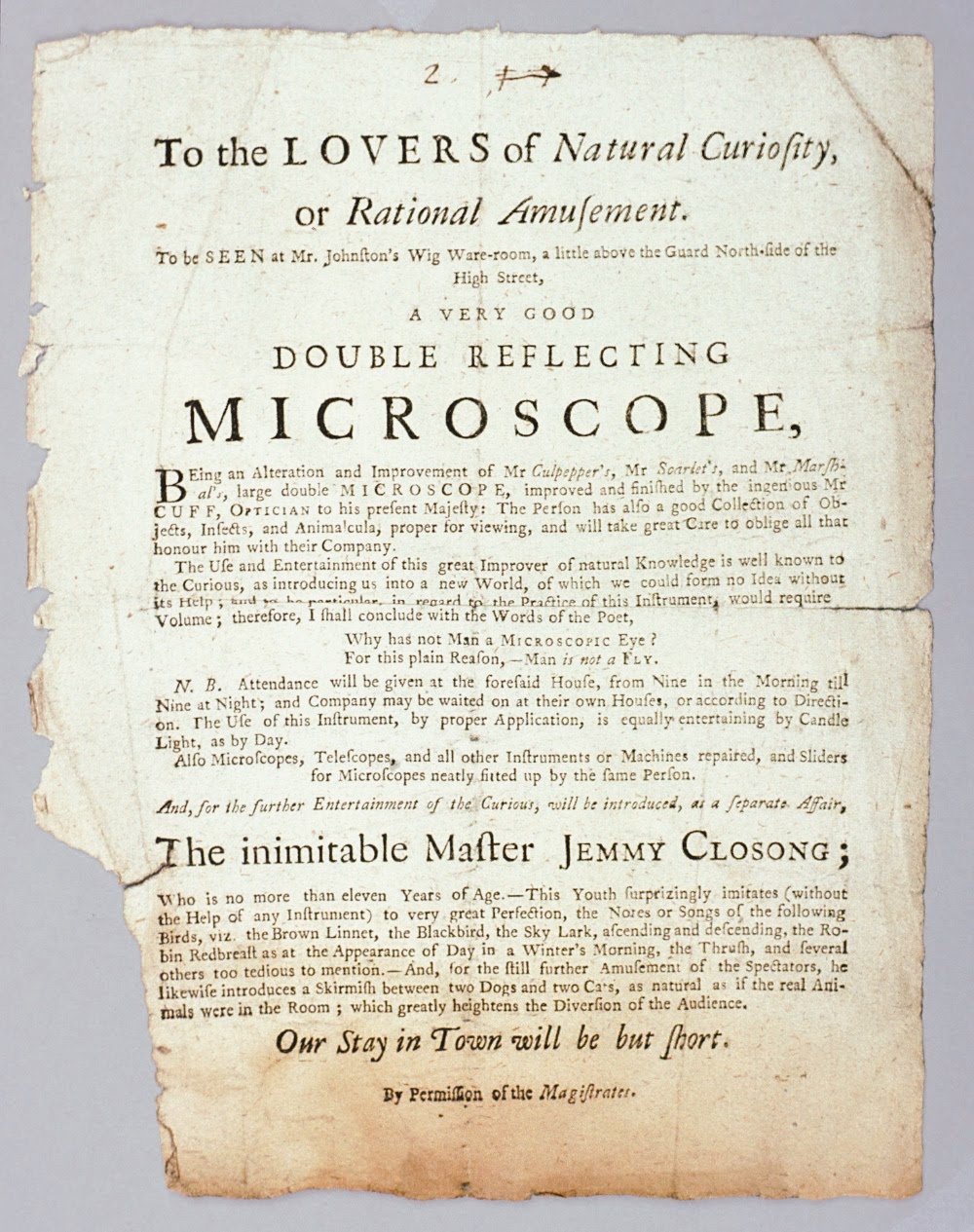Differing attitudes
The general response to the microscope in the mid-18th century was extremely ambivalent. Enthusiasm for recreating the experiments of Leeuwenhoek, Malpighi and Hooke was still high. Interest was also enhanced by Baker's publication of research into the unusual habits of polypes, tiny water-borne creatures. Polypes seemed to regenerate when cut in half, and this could be observed with an aquatic microscope. On the other hand, scepticism - sometimes even denunciation - was found in those who thought that the microscope could teach nothing new, and those who thought that man might be overreaching himself with research into the minute. Pope's scientific/moral poem reflected a general interest in the microscope, whilst urging restraint in its use: "The bliss of man (could pride that blessing find) / Is not to act or think beyond mankind". This recalls Christopher Marlowe's Dr. Faustus, who desired to know too much and fell in league with the devil.
However, the prevalent view was that use of the microscope actually led to a greater understanding of God's creation. Along with giving public microscope shows, instrument makers, such as Benjamin Martin (1705-1782), travelled and gave lectures. Solar microscopes, made by both Martin and Cuff, which allowed more than one person to view a projected and enlarged image, also became popular. Again, this popularity was fuelled by religion:
"[the solar microscope is] the most general and genuine expositor of the Bible of NATURE, which contains a Rational System of TRUE RELIGION, in every respect worthy of, and adapted to the HUMAN MIND, which it expands and repletes with all the PRINCIPLES OF WISDOM, PIETY and DEVOTION.
Animal imitations
If this aspect of popular microscopy was very serious and devout, then the final lines of the advertisement for Cuff's demonstration show a more light-hearted feature of the event:
"And, for the further Entertainment of the Curious, will be introduced, as a separate Affair, The inimitable Master Jemmy Closong;
"Who is no more than eleven Years of Age. -This Youth surprisingly imitates (without the Help of any Instrument) to very great Perfection, the Notes or Songs of the following Birds, viz. the Brown Linnet, the Blackbird, the Sky Lark, ascending and descending, the Robin Redbreast as at the Appearance of Day in a Winter's Morning, the Thrush, and several others too tedious to mention. -And, for the still further Amusement of the Spectators, he likewise introduces a Skirmish between two Dogs and Two Cats, as natural as if the real Animals were in the Room; which greatly heightens the Diversion of the Audience.
"Our Stay in Town will be but short."



